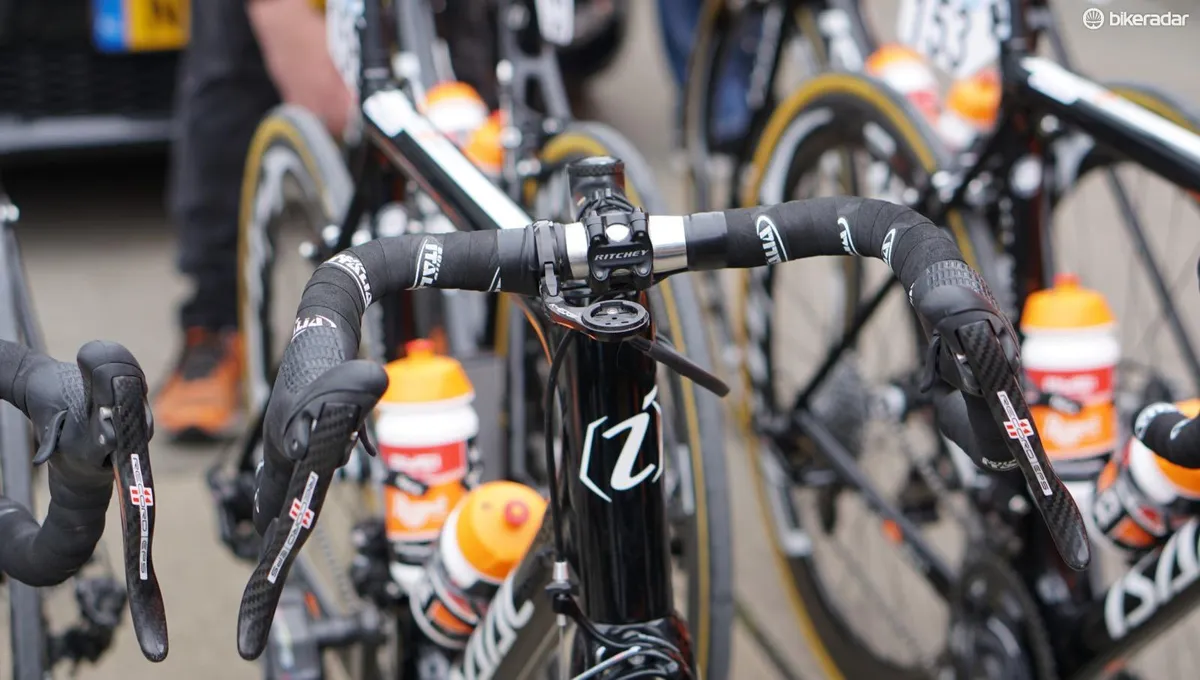Narrow handlebars for road bikes may finally be getting their moment in the spotlight.
Away from steep hills, aerodynamic drag is the biggest force slowing a cyclist down, but despite the best aero road bikes seeing almost all of their parts painstakingly optimised to slice through the wind as cleanly as possible, stock handlebar widths have been largely unchanged for years.
Like crank length and, more recently, saddle length, with the trend towards short-nosed saddles, road bike handlebars do come in a range of sizes, not to mention shapes, yet stock bars have remained steadfastly in the region of 40 to 44cm.
Enterprising riders like Adam Hansen used to be able to experiment with component sizing, but with ever-increasing integration on road bikes, this is much more difficult for riders tied to proprietary cockpits or sponsor-correct setups.
However, to get around this, many pro and amateur racers have turned to rotating their brake hoods inwards to achieve a narrower, more aerodynamic position, while earlier this year Ribble-Weldtite rider and aero aficionado Dan Bigham was spotted riding a road handlebar that measured only 27cm between the hoods.
Since then, Jan-Willem van Schip, a rider who has long used a narrow handlebar on the road, has debuted Speeco’s Aero Breakaway handlebar. The Dutch company's design is custom-made but promotes a narrow, aero riding position thanks to the built-in forearm extensions and flared drops – though van Schip was disqualified from the 2021 Belgium Tour for using the aforementioned extensions.
But what about the rest of us?
Typically, handlebar width increases with frame size. Smaller bikes often come specced with a 40cm bar, anything around a medium will get a 42cm bar, and larger bikes typically get a 44cm (or wider) bar.
With the rider’s body contributing around 80 per cent of the total aerodynamic drag, could there be some low-hanging aero fruit to be gained from going significantly narrower at the front end of your road bike?
Even if narrow handlebars are more aero, are there any downsides to using them? How narrow is too narrow in the real world?
To answer these questions, I spoke to aerodynamics expert Dr Xavier Disley of AeroCoach and product developer Jos Koop of PRO, a leading manufacturer of road bike components, to get their views.
I also called in the narrowest drop handlebar I could find, measuring just 26cm at the brake hoods, to test the concept for myself in the real world.
What are narrow handlebars?
Let’s start by defining what constitutes a narrow road handlebar.
There’s no industry-wide accepted definition, but given the standard handlebar sizing range for road bikes is 40 to 44cm, I would define a narrow handlebar as anything narrower than 40cm.
How is handlebar width measured?
Handlebar width is typically defined as the width between the brake lever mounting points.
It’s most often measured centre-to-centre (from the centre line of each drop of the handlebar), though some brands, such as Deda, measure outside-to-outside (from one outside edge of the handlebar to the other).
Because of this, it’s important to research how a handlebar is measured if you are switching.
For example, a 40cm handlebar measured centre-to-centre is typically a 42cm handlebar if measured outside-to-outside.
On the flip side, a wide handlebar would be anything wider than 44cm by my definition because it falls outside of the standard range.
Typically, you’re more likely to find wide handlebars on gravel bikes, where the extra width can contribute to greater slow speed and off-road control.
Those are just my personal definitions, however, in regards to road bikes. In reality, whether a handlebar feels wide or narrow will depend on the characteristics of any given cyclist, to a degree.
A 40cm handlebar, for example, might feel relatively wide to someone with narrow shoulders, but could also feel relatively narrow to a rider with broad shoulders.
I’ve no doubt mountain bikers also have their own ideas on what’s narrow or wide when it comes to MTB handlebars.
Why might you want to use a narrow handlebar?
Bike position aside, the primary reason to use a narrower handlebar is to lower your aerodynamic drag.
Your body is the largest contributor to aerodynamic drag in the rider plus bike system and, as a result, anything you can do to improve the aerodynamic profile of your body, particularly on the leading edge, can lead to easy gains.
According to Dr Xavier Disley, the gains – or power savings, to be more precise – to be made by switching to a narrow handlebar are in the region of 0.5w per 10mm narrower at 30kph, or 2w per 10mm at 45kph.
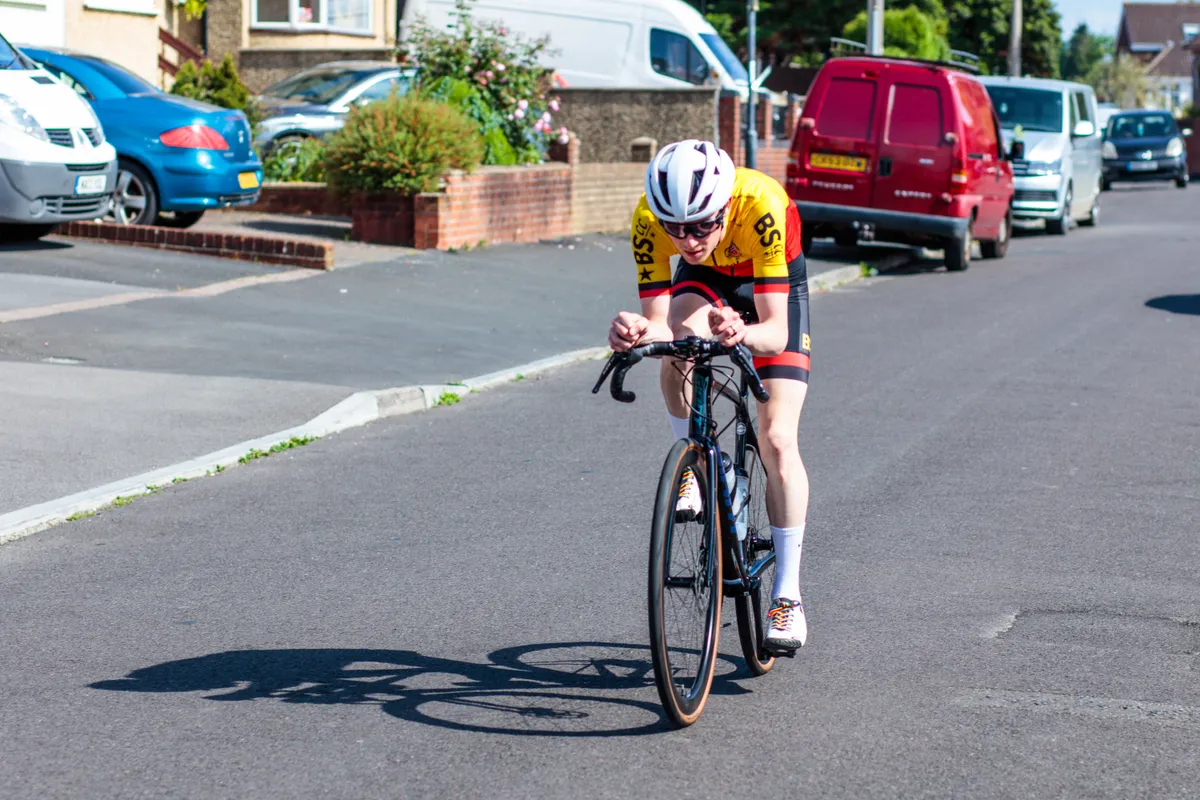
Swapping from a 42cm handlebar to a 38cm handlebar, for example, is worth around 7 to 8 watts at 45kph – roughly equivalent to switching from an 80mm rear wheel to a disc wheel on a time trial bike.
This is likely to be obvious to anyone who’s watched or taken part in a time trial in recent years. Time trial bikes have become significantly narrower at the front end, with the top riders often adjusting the armrests to make their forearms sit as close together as physically possible.
That's why we saw so many of the world’s best track cyclists using extremely narrow handlebars at the Tokyo 2020 Olympic Games.
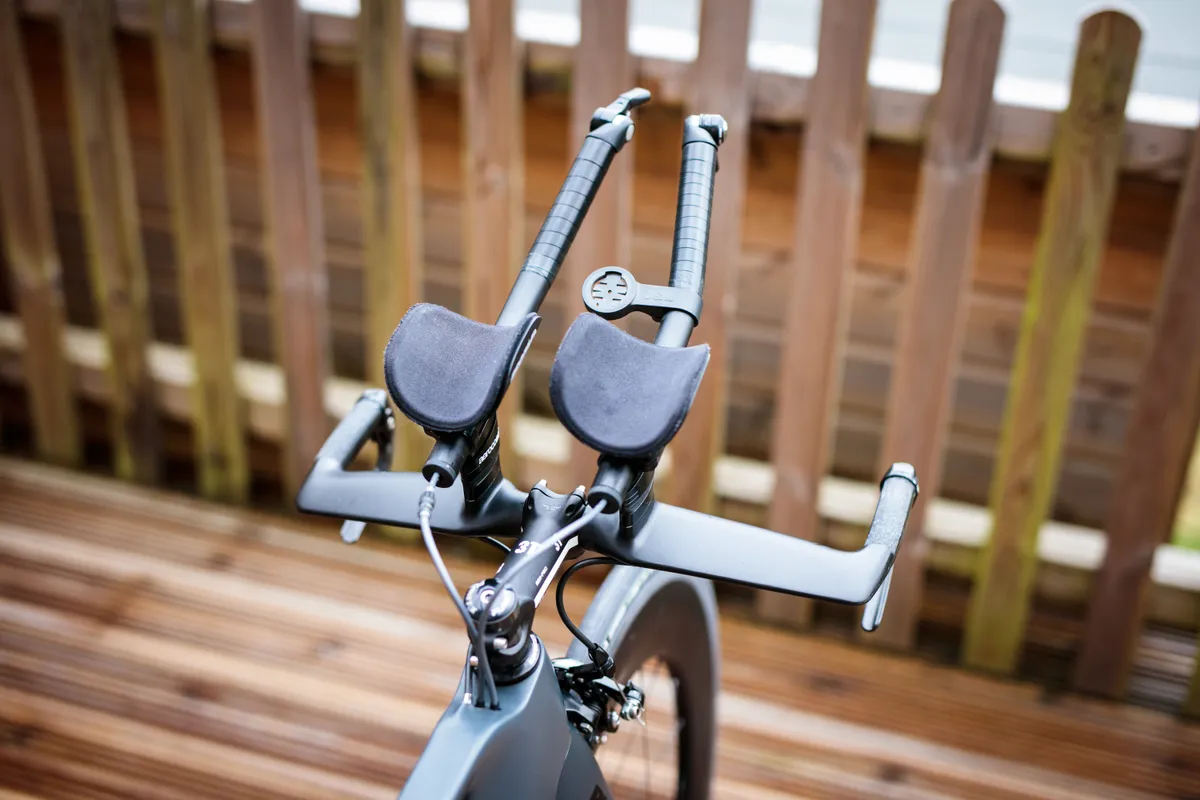
The wattage savings at lower speeds are less impressive at a surface level. This is always the case with aerodynamic improvements, though – at slower speeds you save fewer watts because the power required to overcome aerodynamic drag is proportional to the cube of velocity (this is one reason why manufacturers love to do aero testing at 50kph – it makes the “watts saved” figures much larger).
That said, a slower rider typically ends up saving more time than a faster rider from aerodynamic improvements, for a given course.
Even though the absolute wattages saved are smaller, a slower rider is on the course for longer and therefore has more to gain, in terms of time, from the same percentage reduction in aerodynamic drag.
If you’re happy with the handling and fit of a narrow road handlebar, it can be a relatively cheap way to make you and your bike a bit more slippery (providing your bike doesn’t have an expensive integrated handlebar that would need completely replacing).
How does a narrow handlebar affect handling?
Given I’m not a professional bike fitter or designer, I also spoke to Jos Koop, product developer at PRO, for his view on the topic.
Koop concurs that there is likely an aerodynamic advantage to be had from using a narrower handlebar. He cautions, however, that any resulting riding position needs to be sustainable for the duration of the event, and not have real-world implications that outweigh any aerodynamic advantages.
Anything that’s too uncomfortable, or makes the bike too difficult to handle, is ultimately going to increase fatigue and slow you down.
With regards to handling, there are, according to Koop, “two things at play with narrow handlebars. Steering torque and force input accuracy.”
Having learned some track riders are now using handlebars in the mid-20s, I asked Koop to compare a standard 42cm road handlebar to a super-narrow 26cm one to understand the influence of handlebar width on both of those factors.
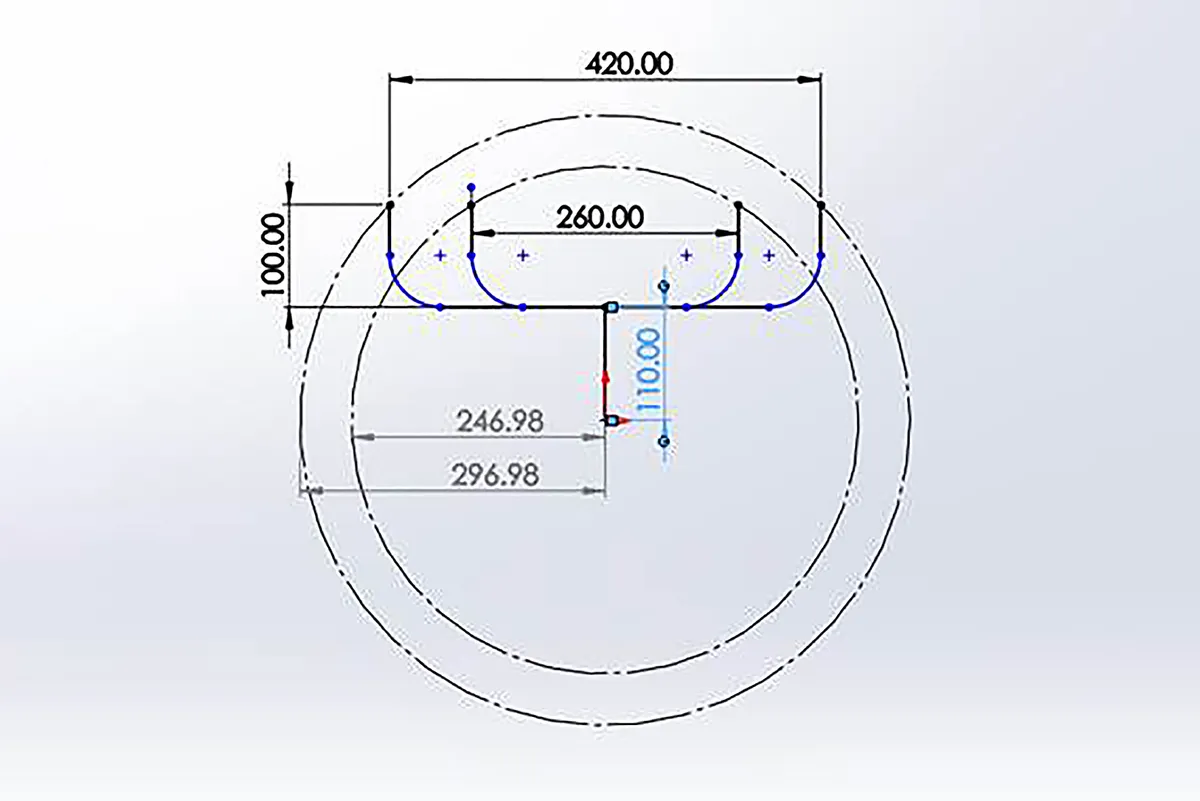
Steering torque
Steering torque is how much force is required to turn the handlebar by a given amount.
As most people know, longer levers increase leverage. Wider handlebars, therefore, require less physical effort to turn than narrower ones.
Comparing a 42cm handlebar to a 26cm one, the turning circle “decreases by about 20 per cent”, Koop says. So “the [rider’s] force input would need to increase by 20 per cent to have the same torque applied”.
This is something that could be “trained up” or adapted to, “to a certain extent”, says Koop. Increasing stem length or handlebar reach would also negate this effect by increasing the size of the turning circle to compensate.
But, Koop nevertheless says: “If you have a lot of steering to do, you can be sure to get more tired riding a narrower handlebar.”
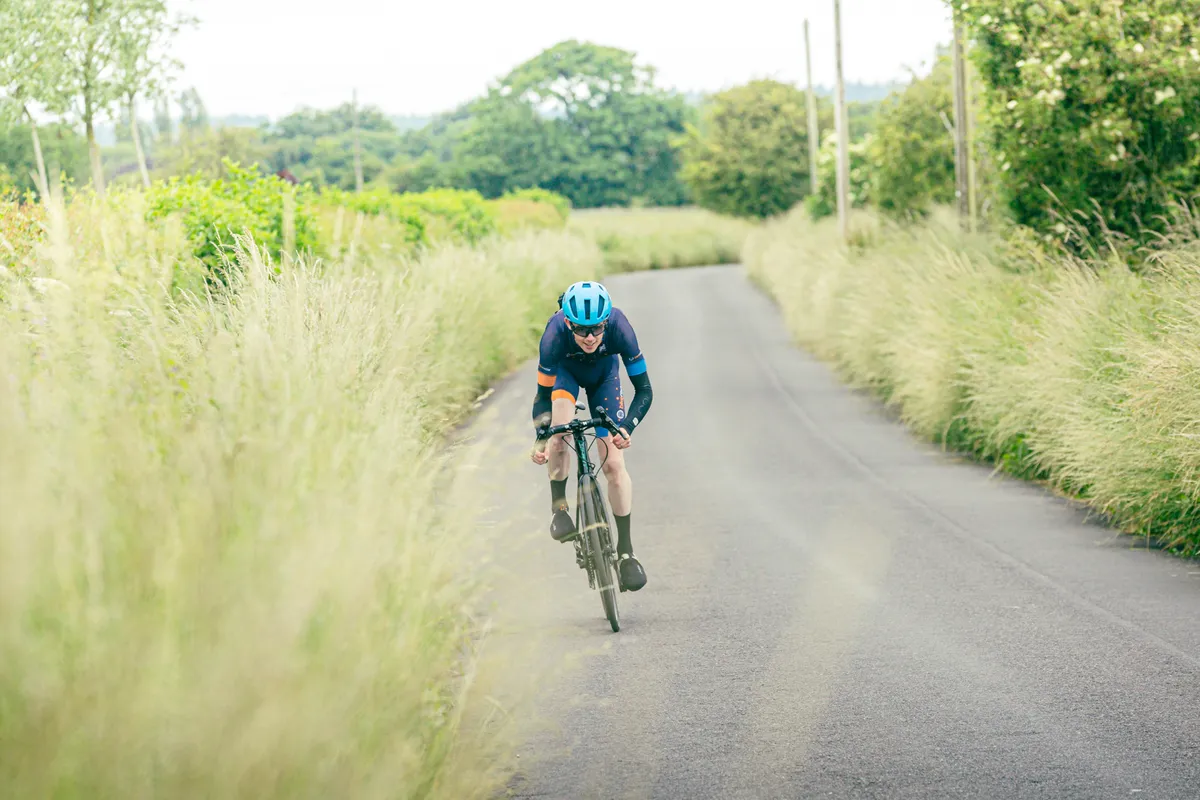
A super-narrow handlebar might be fine for track and time trial racing, then, but might not be the best choice for ultra-endurance cycling.
Again, the key thing for any rider is to weigh up the potential benefits against any disadvantages.
It’s not uncommon to see narrow handlebars in the professional peloton, but pro riders are also known for having little regard for comfort or, to a certain extent, fit in pursuit of performance gains.
Force input accuracy
Force input accuracy is how precisely your steering inputs translate to the handlebar – how easy is it to make the exact steering adjustment you intended to.
The ends of a wider handlebar, for example, have to travel further when turning, which slows down the speed of steering for a given force input. This should make it easier to steer the bike accurately and not over or understeer.
Let’s take the same 42cm versus 26cm handlebar comparison and consider force input accuracy.
“In the same way as the torque decreases with a smaller steering radius (considering equal applied force), the distance travelled with the hands to achieve a certain steering angle is also decreased by 20 per cent," says Koop.
“This creates quicker handling (because of the shorter distance to get the handlebar rotated into the correct position), but is also more prone to small variations.”
He adds: “If your natural riding style includes some motion of the arms that push/pull on the handlebars, switching to a narrower handlebar will cause a bigger unwanted steering output.”
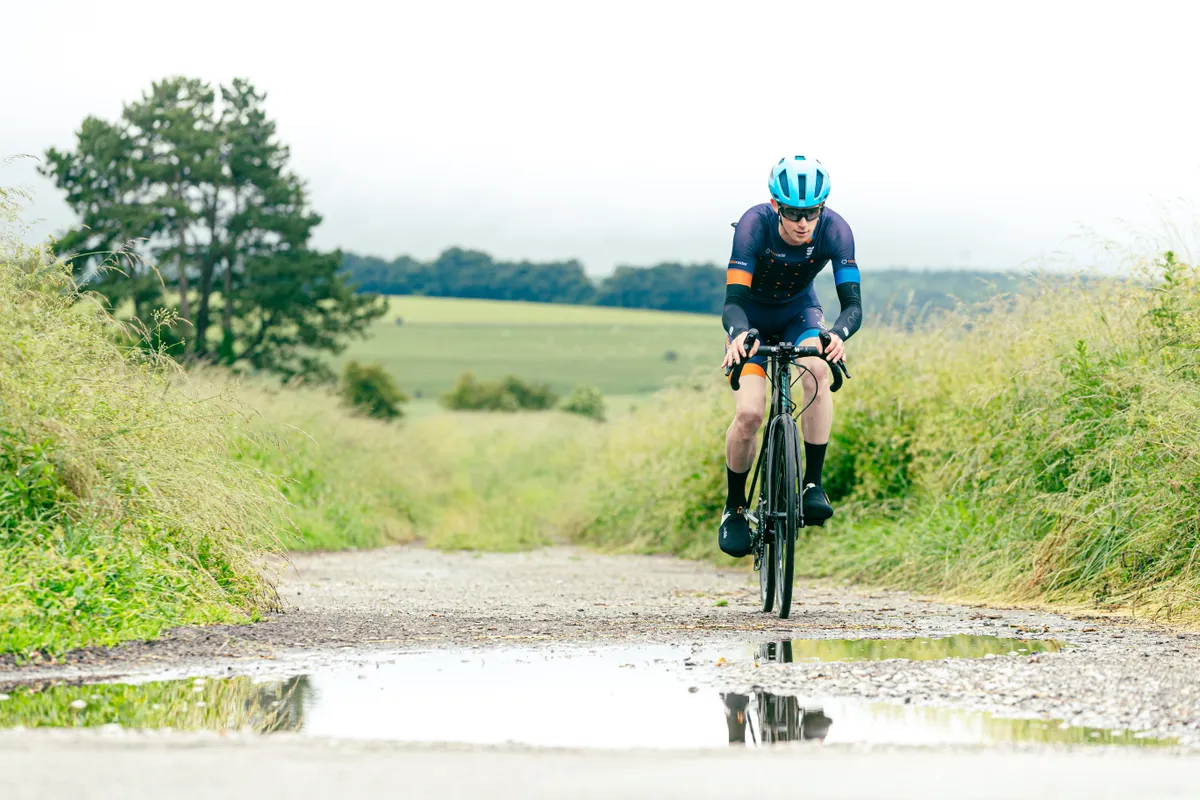
Because of this, Koop recommends narrow handlebars are “best suited to a more steady riding style” and more experienced riders.
Again, this is likely something that can be adapted to over time but, Koop says: “someone with less strength and motor skills is better off selecting a wider handlebar”.
How narrow should you go?
If, at this point, you’re intrigued by the prospect of some easy aero gains, the obvious follow up questions are: “How narrow should I go?” and “How narrow is too narrow?”.
After all, if a 36cm handlebar is better than a 42cm handlebar, is a 32cm handlebar even better, and so on? Where’s the limit?
In terms of aerodynamics, track testing by AeroCoach shows an 11.3w saving at 45kph when switching from a 38cm to 28cm handlebar, with even greater savings at higher speeds.
Is it actually sensible to use such narrow handlebars on the road, though?
To attempt to answer this question, I acquired the narrowest drop handlebar I could find – a Worx track handlebar, which measures 26cm (centre-to-centre) at the brake hoods and 33cm at the drops.
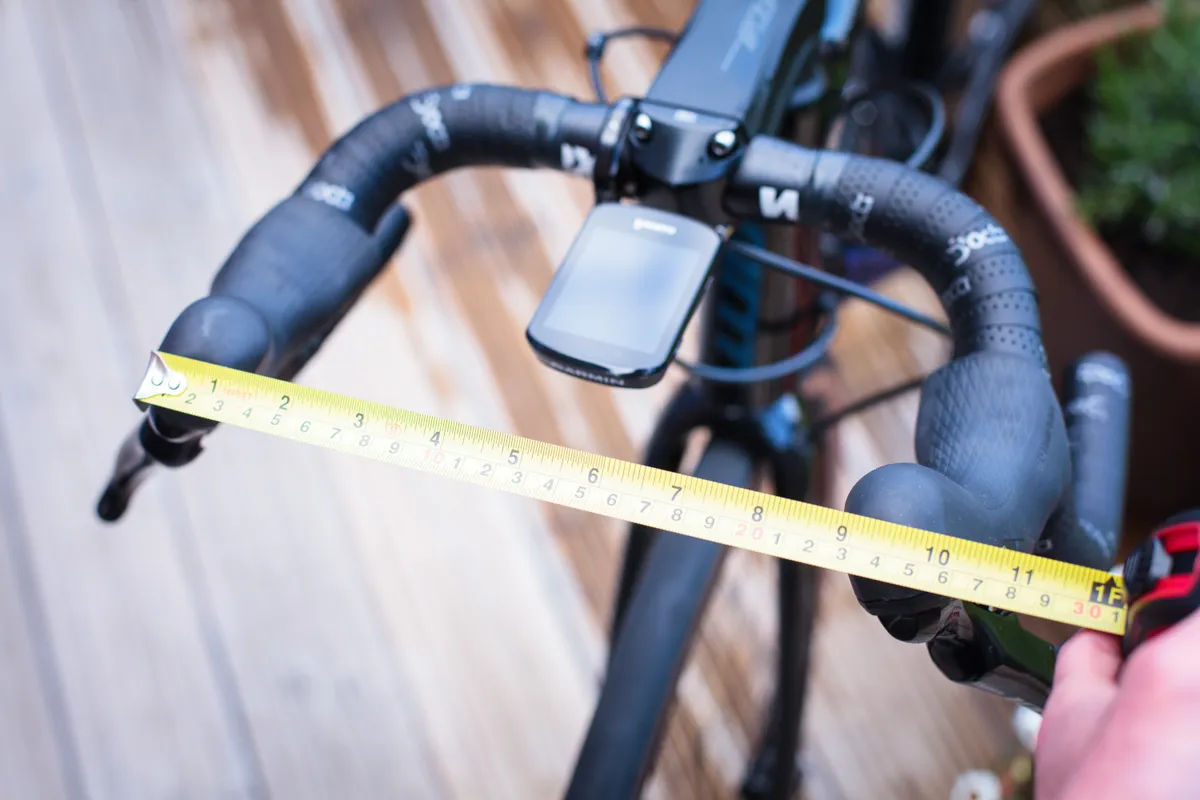
Having long been a fan of 36cm handlebars (which, in my opinion, have no detectable drawbacks for road riding versus standard-width drop handlebars), I’ve spent the last few months using the Worx handlebar on my Giant TCR Advanced Pro 2 Disc long-term test bike.
And the result? Well, here’s how my experience played out on the road (with the caveat that I am, as you might have gathered by now, someone who is interested in experimenting with this kind of thing).
The good
As you might expect, when you’re riding along on flat or rolling roads, handlebars this narrow offer a noticeably more aerodynamic position.
Riding with a power meter makes it obvious that less effort is required to maintain typical riding speeds, which probably won’t shock anyone.
The biggest surprise was how relatively normal they feel, though.
Before testing, I was concerned such a narrow handlebar would make the bike difficult to handle, but my fears were misplaced.
Yes, handlebars this narrow do change how a bike handles, but I was surprised both at how small the change felt and how quickly I got used to it.
Essentially, after about ten minutes or so of riding, the bike felt surprisingly normal most of the time.
This makes sense once you remember that, on a road bike moving at speed, a lot of steering is performed by leaning and counter steering – you don’t actually need large steering inputs at the handlebar, except at slow speeds.
Because of this, the effects on steering torque and input accuracy mentioned by Koop don’t come significantly into play all that often.
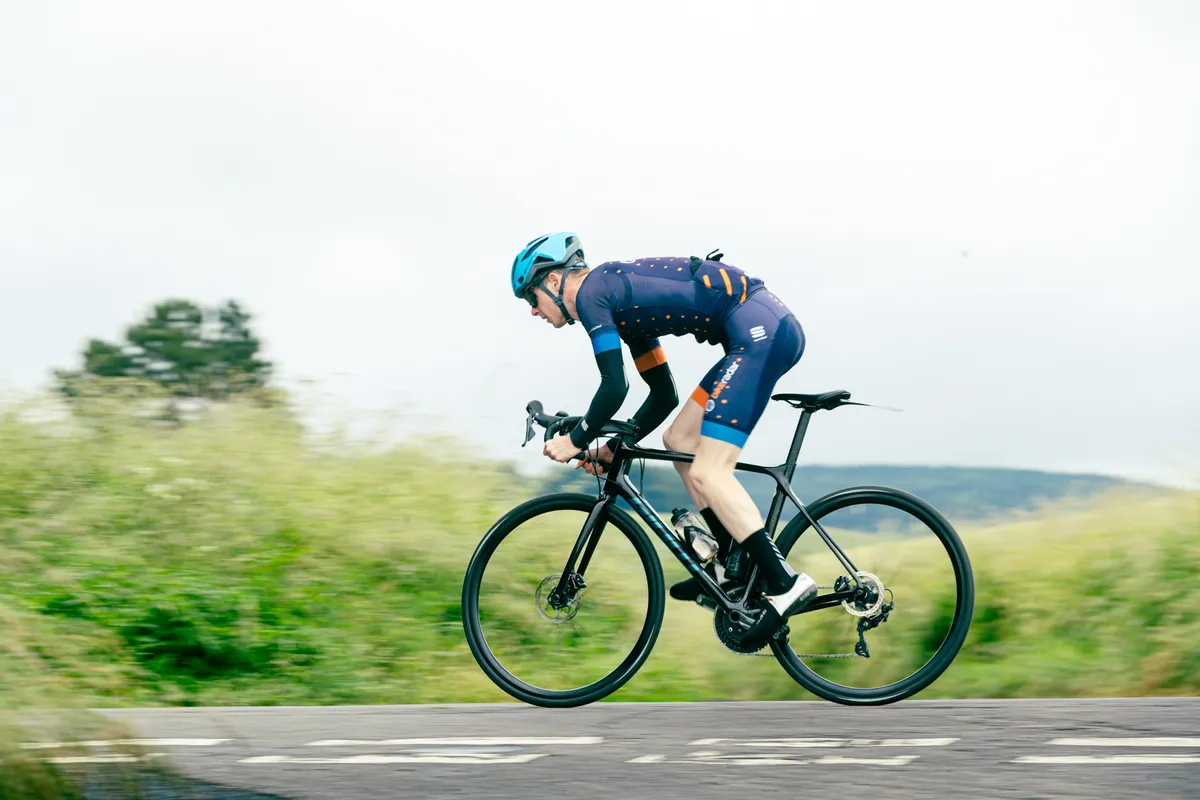
When you’re making sharp turns at slow speeds, it should theoretically make a bigger difference, according to Koop’s calculations, because you’re mainly turning the handlebar in order to change direction in those situations. But, I can’t say I ever really noticed it except for when climbing out of the saddle (more on this later).
I did appreciate the extra width on the flared drops when descending at speed. At 33cm, it’s still narrow enough to offer a tangible aerodynamic benefit, but the increased stability and force input accuracy afforded by the extra width compared to the hoods position is good to have for descending and high-speed cornering (because the consequences of a steering error become more dangerous at higher speeds).
The combination of a narrow hoods position for straight-line cruising, and a more normal (in relative terms) drops position for descending and high-speed cornering, was welcome, then.
It is important to acknowledge I am an experienced road cyclist. I also have narrow shoulders and am used to riding TT and aero road bikes, and came from a starting position of already using narrower than standard handlebars.
That said, I’m no Peter Sagan when it comes to bike handling (I can’t even wheelie). However, if you were to switch to a narrower handlebar than what’s specced on your bike as stock, my experience suggests the difference isn't beyond the ability of an average cyclist to adapt to.
The bad
The first and most obvious drawback is that a handlebar this narrow dramatically reduces the amount of available space on the tops of the handlebar.
As a consequence, you essentially lose the tops of the handlebar hand position, unless you don’t mind putting your hands right up against the stem, and you’re left with very little room for handlebar-mounted accessories (such as bike computers, bells or road bike lights).
If you need to mount a light, you might have to attach it to the underside of an out-front computer mount, for example.
For me, these aren’t major issues, but if you like climbing with your hands on the tops, or simply find it a more relaxing, upright position to ride in, you might feel differently.
Climbing out of the saddle on steep climbs is also less comfortable than with wider handlebars.
You have to use more upper body strength to stabilise the bike because your hands are so much closer together.
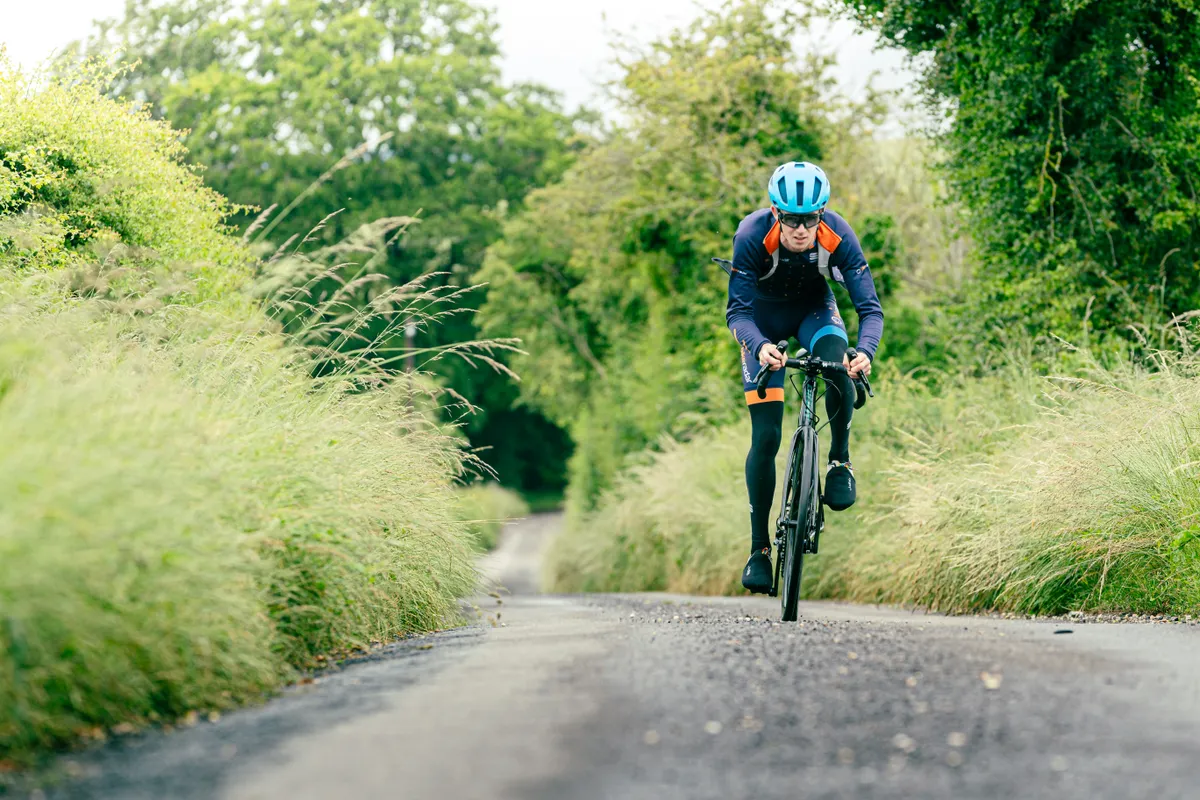
It isn’t bad enough to be a deal-breaker for me, and I found it was only noticeable on gradients that were steep enough to be a generally unpleasant experience anyway.
It’s also possible to get around this issue by selecting easier gears and climbing seated because that's usually more efficient from a physiological and aerodynamic point of view. This depends, of course, on how low your gears go and how steep the gradient is.
Nevertheless, if you regularly ride lots of very steep climbs or if you have a strong preference for climbing out of the saddle (efficiency be damned), then I can see this being less enjoyable and more tiring.
The ugly
Let’s address the elephant in the room. Handlebars like this do look... unusual (I’m being charitable).
I’ve ridden this bike a couple of times recently in unrelated videos, over on the BikeRadar YouTube channel, and the handlebar has attracted its fair share of comments.
If looks alone are enough to put you off then so be it.
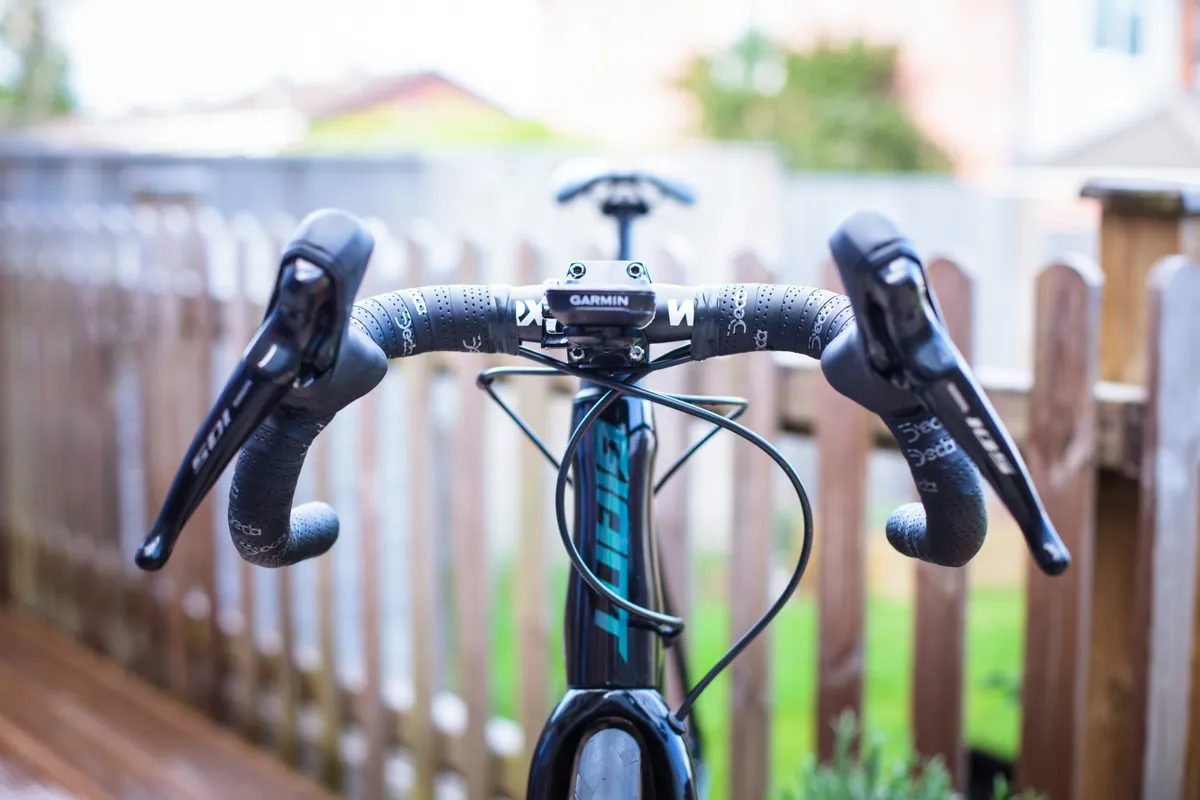
It’s probably the reason the POC Tempor wasn’t a hit when it was first released back in 2012, despite it being a very aerodynamic helmet in the right conditions.
A lot of people think aero road bikes, with their boxy tubes and odd shapes, can be a bit ungainly too, compared to classically styled bikes like the Specialized Aethos.
Ultimately, it depends what you’re willing to sacrifice in order to potentially ride your bike a bit faster.
How narrow is too narrow?
Am I suggesting everyone switch to handlebars this narrow, then? No, and I don’t think I’ll be sticking with them either. For general riding, 26cm at the hoods is probably too narrow, even for me.
I didn’t have any major issues using a handlebar that narrow, but it does make for a very aggressive riding position, with no space on the tops for a relaxed, upright position, for example. A narrow bar is all race, all of the time, and even a performance weenie like me enjoys riding slowly sometimes.
I won’t be going back to anything wider than 36cm (which, amusingly, feel very wide when coming straight off the Worx handlebar), though.
It’s horses for courses then.
For road bike time trials (where clip-on aero bars are banned) or hill climbs (with the exception of the steepest hills), I would definitely use a handlebar this narrow. If you can hold the more aerodynamic position, they are faster.
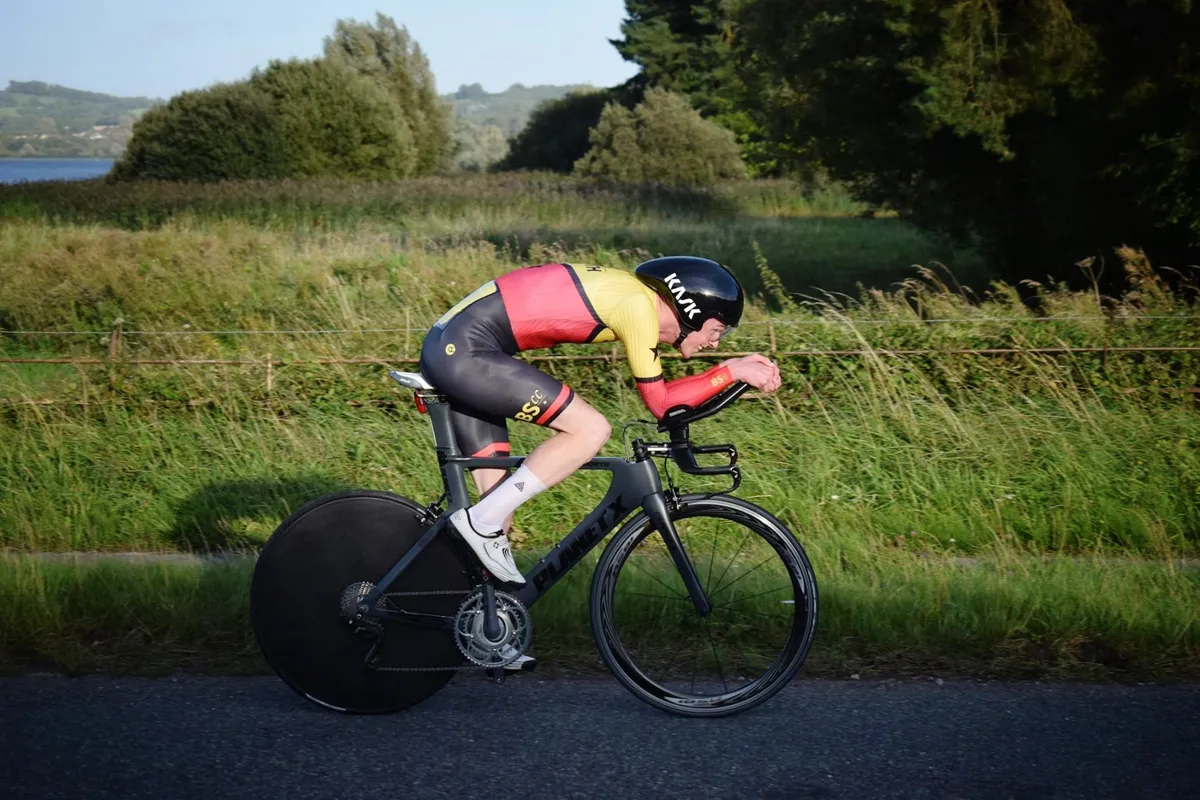
But, if you’re not racing those specific disciplines, they’re a bit too aggressive – even for me.
Ultimately, “how narrow is too narrow?” is a question that each rider will have to answer for themselves.
I’m confident handlebars in the region of 36cm to 40cm are unlikely to cause any handling issues for the majority of cyclists, though, and, providing you have no issues with the fit, they should make you a little faster for no extra effort.
For me, a narrow bar is an obvious upgrade for an aero road bike or any kind of go-fast road bike build.
I’d like brands to not just doggedly stick to the way things have always been done, or to at least offer more choice when it comes to component sizing.
Credit to Ribble for offering its new Ultra SL R aero road bike with handlebar widths of 33cm, 36cm and 38cm, for example. I haven’t had a chance to test that bike yet, but I think the narrower handlebar options will prove to be a smart move.
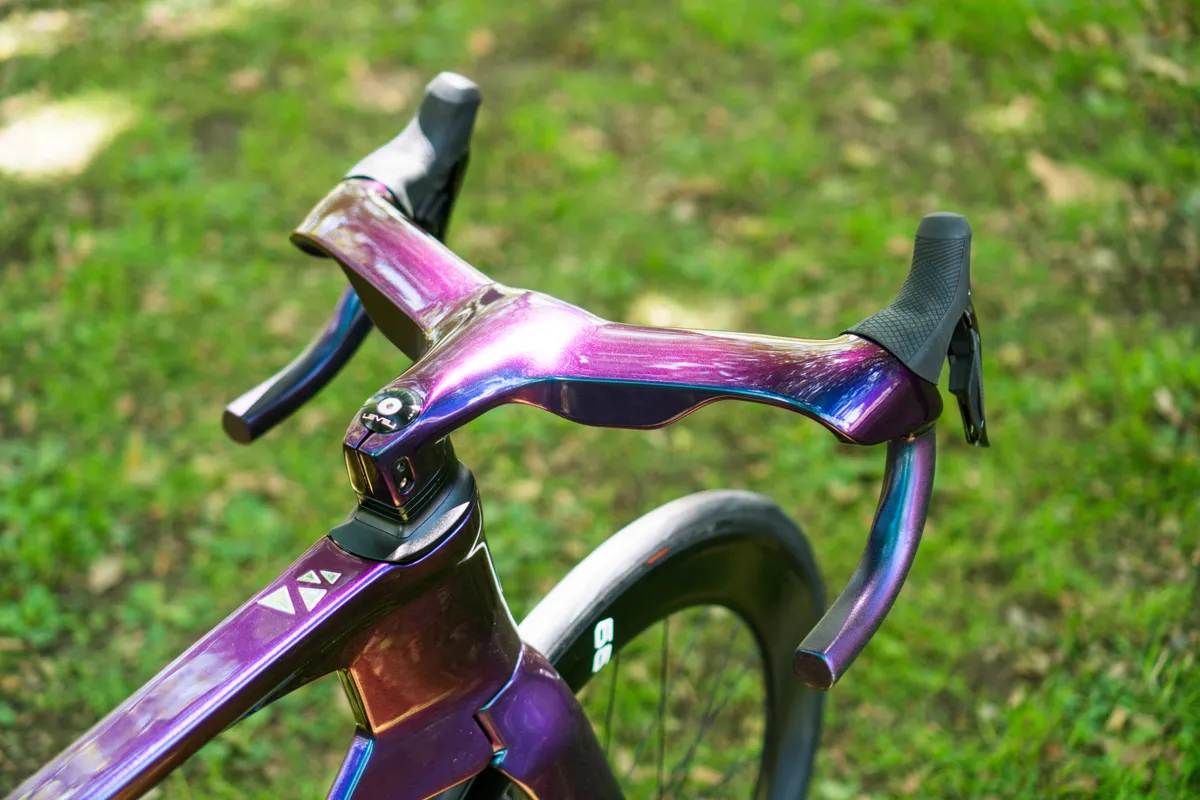
I’d also like to see a greater range of component sizes from third-party manufacturers because there aren’t many options available for those wanting to go narrower than 38cm.
36cm road handlebars are starting to become more common, thanks to the influence of the pro peloton, but if you want to try anything narrower than that, there’s almost nothing available.
I understand the economic arguments against doing this. Making components in the three or four most popular sizes makes financial sense, but maybe narrow handlebars don’t sell in huge numbers because hardly anyone sells them? Someone has to take the plunge.
ENVE offers its carbon SES aero road handlebar in a size with 35cm hoods and flared 40cm drops, but at $400 it’s also hideously expensive.
PRO’s new Vibe aero alloy pursuit handlebar comes in a 36cm width, offers flared drops and has an RRP of £100, which is more palatable. It also offers a 12-degree sweep on the tops, which PRO says “encourages riders to maintain a highly efficient, aerodynamic position on the bike”. On paper, this all sounds great.
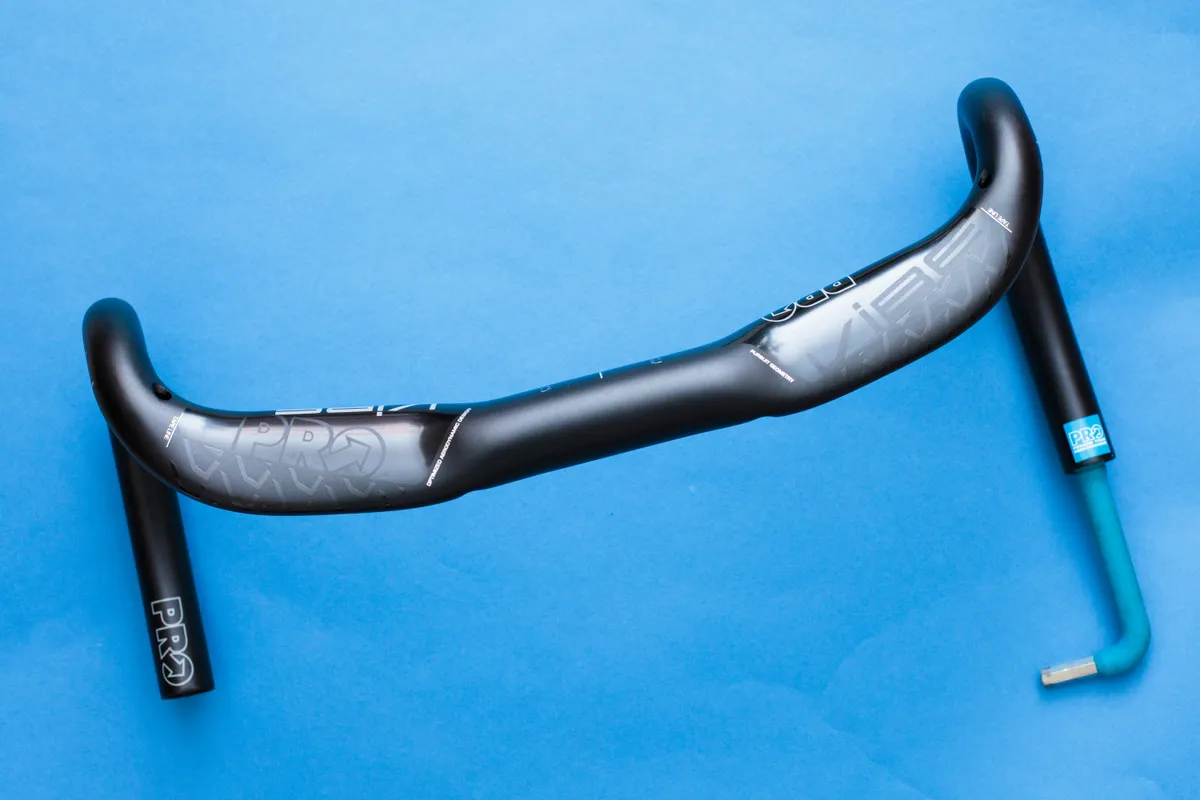
I’d have loved to have seen a version with a 34cm or even a 32cm hoods position, but I’m nevertheless looking forward to trying that one out.
Until then, my current handlebar of choice is the Rose Race Attack GF Aero in a 36cm width, which I previously had on my Giant TCR Advanced Pro 2 Disc long-term review bike.
It has a 36cm hoods position with 40.5cm drops. It lacks internal cable routing and the drops don’t have the traditional bend I’m fond of, but it costs just €23.95. An absolute bargain (purchased before Rose stopped selling bikes and parts to the UK).


